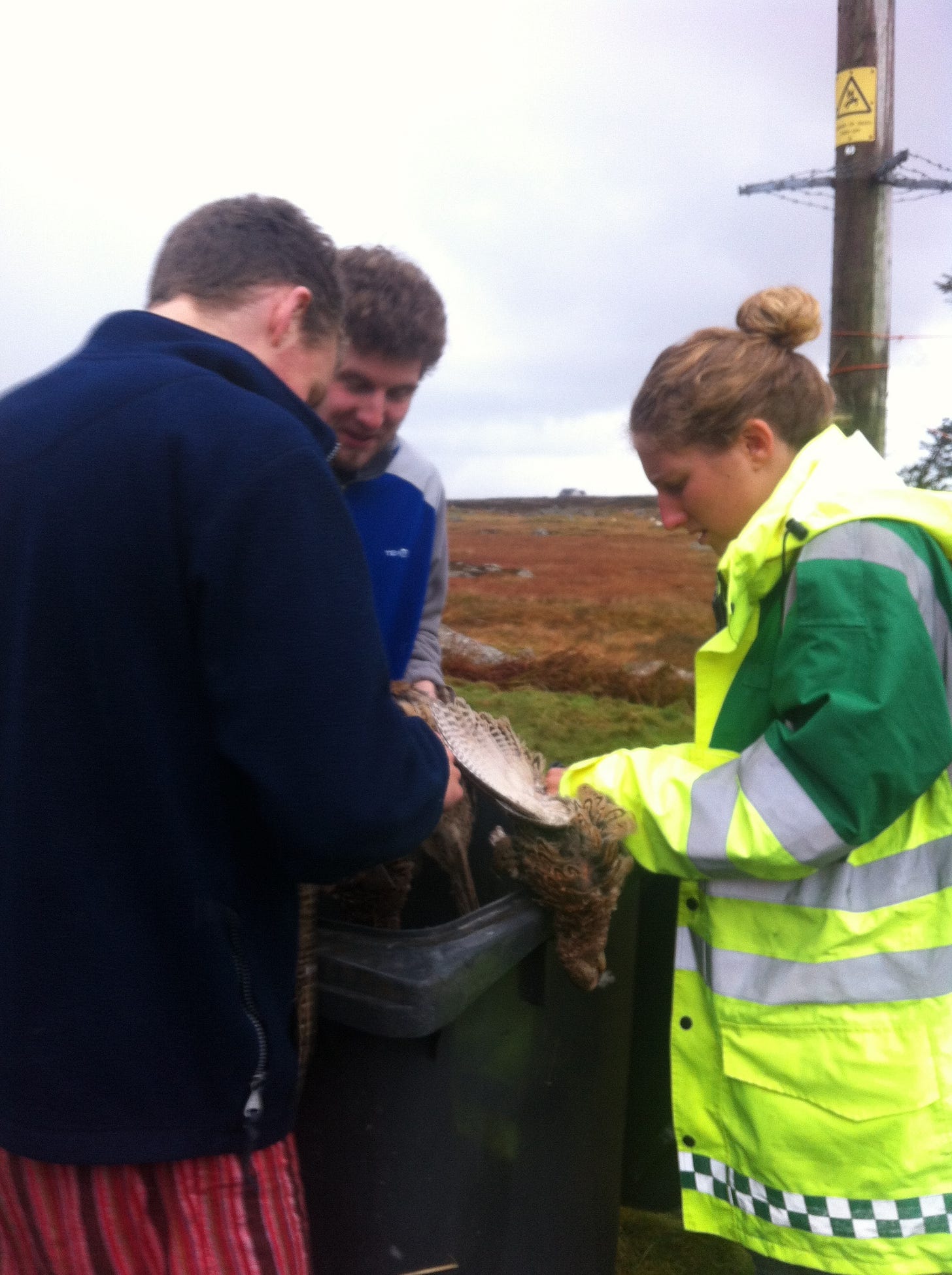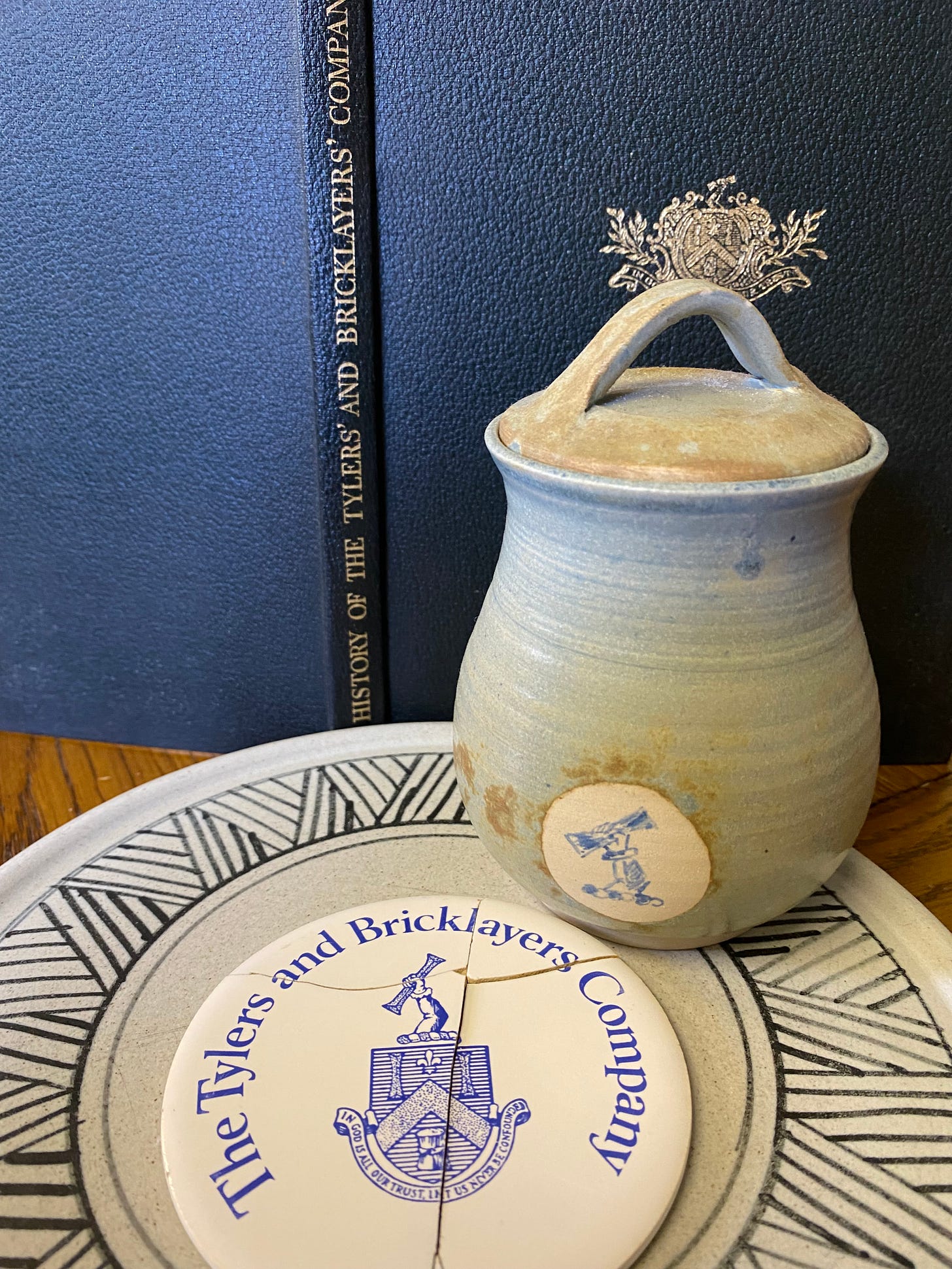The English Renaissance writer Nicholas Breton, remembered for his religious and pastoral poems, notes that November is the time for hunting: woodcock, pheasant and mallard and Christmas food preparation.
For the homemaker, November brings culinary anticipation with a climax on Stir Up Sunday. This is the Sunday before Advent, the twenty fifth Sunday after Trinity, when we concentrate on mincemeat, plum pudding and Christmas baking. Sweet smelling spices in a warm kitchen bring comfort on dark November days.
November 22nd brings the Feast Day of St Cecilia, the Patron Saint of Musicians. St Cecilia was given in marriage to a pagan named Valerian, although she had taken a vow of chastity. She converted her husband and his brother Tiburtius, to Christianity and in the course of time was martyred. Her connection with music is mentioned sparingly. William Caxton writes in his version of Voraginus Gold Legend:
She heeryng the oraganes making melodye, she sange in hir herte onely to God.
Additionally, Chaucer tells us the story of St Cecilia in the Second Nun’s Tale. Her short musical association is found in the following couplet.
And while the oragns naden melodie
To God allone in herte thus sang she.
St Cecilia was adopted by the Guilds of Musicians in the Middle Ages. Her patronage was withdrawn at the Reformation, but enlisted again soon after. The first documented St Cecilia Music festival was in Evreux in Normandy in 1570. She was adopted as the Patroness of Church Music towards the end of the sixteenth century and the first record of an English celebration of St Cecilia’s day is in London, in 1683 with the formation of The Musical Society. However, by the end of the 17th century, St Cecilia’s association with music is established. The first, Poet Laureate, John Dryden, following in Chaucer’s footsteps, wrote Song for St. Cecilia’s Day in 1687, and Henry Purcell composed an Ode to St Cecilia in 1692. More recently, the composer Benjamin Britten whose birthday by coincidence fell on St Cecilia’s Day, composed the masterpiece Hymn to Saint Cecilia Op.2. (1942). Sir Henry Wood of Promenade Concert fame, was said to have been keen to revive the Festival, but died before it was re-established. Britten took up the mantle. His ode to St Cecilia would prove to be his final collaborative work with his friend the poet W.H. Auden. Auden’s words honour the saint whose festival at St Ceciliatide, aids the Musicians Benevolent Fund. A festival service rotates annually between: St Paul’s Cathedral, Westminster Abbey and Westminster Cathedral; the combined choirs of all three churches participate in the service.
There is also a procession of the robed Master and Clerks of the City of the London Livery Companies who each make a mandatory donation to the Musicians Fund. Participation is not proscriptive, but St Cecilia’s Festival is included in the Almanac for Livery Companies. There would appear to be varying levels of duty for the Masters of Worshipful Livery Companies to attend church services. However, originally, there was a strong religious element to the Guilds. This declined after the Reformation.The monopolistic control of trades evaporated to some extent, with the rise of private businesses (capitalism). Contemporary Livery members have little, if any, connection with the trade - my father-in-law, a former medical missionary, held the office of Renter Warden of The Worshipful Company of Tylers’ and Bricklayers’. The City of London’s association with the church may be reflected in the term ‘Worshipful’. A Livery Chaplain, appointed for a set term, presides over Grace at meals (each company has idiosyncratic banquet customs) and takes occasional services at the Company’s associated church. Each Company holds its own service of Thanksgiving, Carols and election of new Master such as is its tradition.
The oldest purpose-built concert hall in Scotland, St Cecilia’s Hall has since 1959 been a part of the Music Faculty of Edinburgh University. The heyday of the concert hall was short lived for financial reasons and interestingly, the building was at one time used as a place of worship by Baptists awaiting completion of their own place of worship.
The first line of Shakespeare’s play Twelfth Night Music is famous: If music be the food of love, play on. Music has the power to enhance emotions. It would be interesting to explore the relationship between music and food: tempo, volume and type (classical, rock, or jazz as examples) but I will only suggest that music is positively related to food intake. St Cecilia deserves a music inspired recipe. In preparation for Christmas with a sideways nod to Thanksgiving (November 23rd) a recipe for:
Cranberries Fermented in Honey and Spices
250g firm cranberries (remove any bruised berries)
Thinly shaved peel of a scrubbed, small orange
4 cloves
Sprinkling freshly grated nutmeg
Small stick cinnamon
Approx 450g Local Runny Honey
Rinse the cranberries in a sieve and then pop them in a salad spinner to remove excess water.
Put the washed berries into a bowl and break the berries open with a potato masher or pop them in a sealed plastic bag and bash with a rolling pin. I don’t think it’s worth washing a food processor for this wee task, but it is of course, another option.
Pack the crushed cranberries into a Kilner jar. Add the orange peel, cloves and cinnamon and cover with runny honey. This is a slow process. Don’t skimp on the honey– it is important to cover the berries. I don’t have fermentation weights or fermenting lid (kits are available), but this means that I must give the jar a daily shake (add it to your to do list). I cover the cranberries with a piece of greaseproof paper and loosely seal the jar with a lid. Set aside in a dry, dark place for at least two weeks.
Give the (well-sealed) jar a good shake as a part of a daily routine. When the bubbling starts, undo the lid to release the gases and pop the lid back on loosely. Repeat daily.
Taste, and when you are happy with the flavour, remove the peel and spices. In a honey based ferment, the honey thins - use a slotted spoon to remove the berries and pop them into a clean jar. Seal and store in a refrigerator
.
Cranberry relish is delicious on porridge or used in Christmas canapes.
Tips:
Speed up the process by adding a little kefir whey.
Ring the Changes: replace the warm spices and orange with lime, deseeded chili and crushed fresh ginger.
November 23rd is the Feast of St. Clements. The bells may ring out the nursey rhyme Oranges & Lemons at the Church of St Clement Danes, but the citrus service takes place on the Sunday closest to March 31st. The schoolchildren who attend this service go home with an orange and a lemon. A diary conundrum. The Feast of St. Clements seems to be a wee bit of a movable feast in that it takes place on Old Martinmas Day (23rd November) which some rural folk continued to celebrate after Pope Gregory’s calendar change. To confuse further, Margaret Baker in Folklore and Customs of Rural England cites 4th December as Old St. Clement’s Day. She describes a sheep fair in the Berkshire Downs and in Lambourn, stalls that sold sweets and toys. Clementry cakes ( made with butter, currants, peel, sugar and spices ) were baked in Wantage until the late 19th century. Interestingly, although not native to Britain, citrus fruits are documented in 15th century recipes. St. Clement is the Patron Saint of Blacksmiths.The anchor is his instrument of martyrdom. Clem Fests involved processions with a blacksmith dressing as Old Man Clem and gaiety aided by frequent trips to public houses. Children went clementing - this involved singing a rhyme in return for money, food or sweets. This activity continued two days later on the Feast of St Catherine (November 25th) when it was known as Catterning. Both Clementing and and Catterning echo the Hallowe’en tradition of Souling, similar to contemporary Guising or Trick and Treating.
St. Catherine was martyred on a spiked wheel hence the tradition of the Catherine Wheel firework. Margaret Baker writes that Catherine was the Patron Saint of Spinners and Lacemakers but this is disputed by some. She was also the Patron Saint of Young Women. On Cattern Day, children in English lace making areas (e.g. Nottingham), where it was a traditional holiday, chose a Cattern Queen. Dressed in white, she walked the villages where she was rewarded with money and cakes. There are well documented Catterntide baking traditions: wiggs a sweet bun leaven with ale yeast and flavoured with caraway seeds and a Cattern Pie made with mincemeat. This seems appropriate as we move towards Stir Up Sunday and mincemeat preparation.
November is a month of short daylight hours, but its sunrises and sunsets can be spectacular. Late November Feast Days make excellent sense. It would be good to resurrect some jolly late Feast Day traditions, as we look forward to Advent, celebrating the birth of Christ and the New Christian Year.










Fiona, this is so wonderful - I've learned so much, and I'm excited to try this fermented cranberries recipe! The dissolution of guilds over time really breaks my heart again and again.
Ask and so you shall receive!
My last post confessed an ignorance to St Clements and lo your next post delivers.
What a wonderful history of the feasting traditions. You are quite right that in these dark months leading up to advent, there is definitely room for more feast days.
I don’t know if it’s just coincidental but both Cecilia and Clements proved somewhat impervious to drowning in their martyrdom. Cecilia requiring stab wounds to the neck and Clements to be weighed down by the anchor.
I’m neither case could their faith be sunk as their spirits were able to soar:
“Men call me Cecilia, but my most beautiful name is that of Christian.”